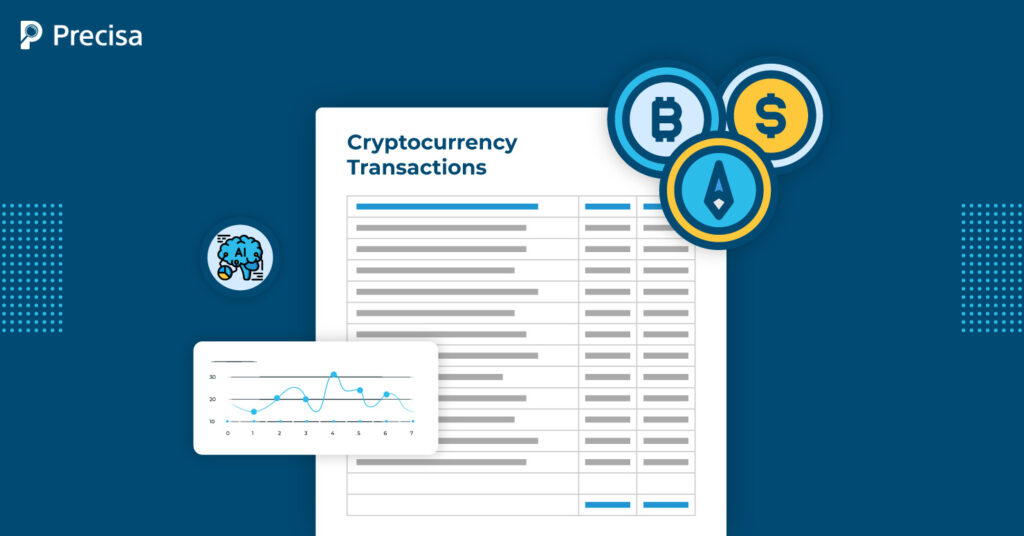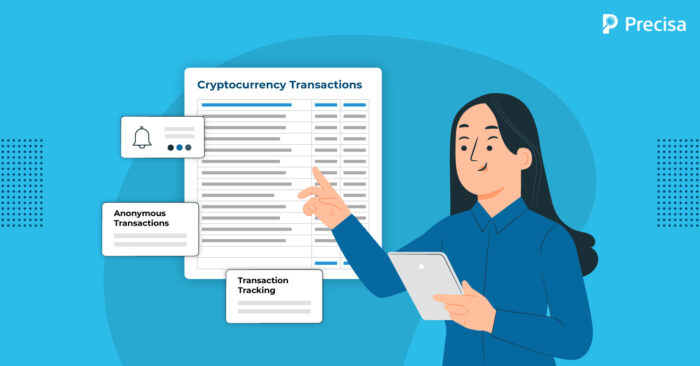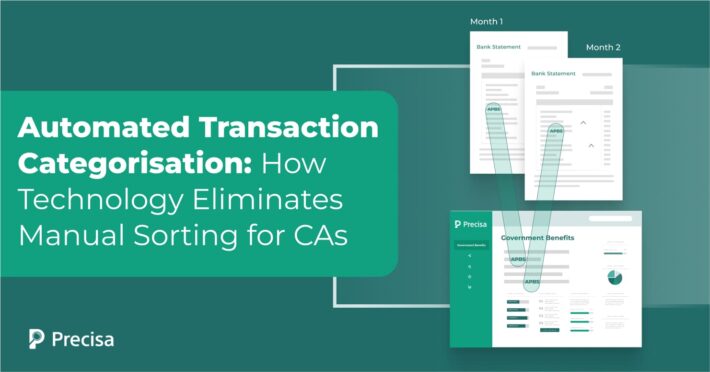Using Bank Statement Analysis to Navigate Cryptocurrency Transactions

Today, a growing number of businesses, including a mix of e-commerce platforms, retail companies, and electronic businesses, accept payments in Bitcoin cash and other cryptocurrencies. This trend mirrors the growing number of interested consumers who are investing and transacting in cryptocurrency. According to a 2022 survey, over 75% of retailers have plans to accept either cryptocurrency or stablecoin payments in the next two years. The survey also revealed that 83% of retailers expect a growing consumer interest in digital currencies. During the time of the survey, a little over half of them had already made investments of over $1 million to enable crypto payments. As companies engage in a growing number of cryptocurrency transactions, it presents a fresh challenge for lenders. How do they analyse cryptocurrency transactions as part of the underwriting process? In this blog, we explore how lenders – from banks and Non-Banking Financial Companies (NBFCs) to digital lenders can leverage the benefits of bank statement analysis software to analyse cryptocurrency transactions of potential borrowers.
What Is Bank Statement Analysis?
Lending businesses need to review massive amounts of data when making decisions about granting loans to businesses. The documentation can include bank statements, income statements, balance sheets, and the financial history of a business.
Traditionally, bank statement analysis was a manual process where financial documents were thoroughly reviewed. Underwriting teams were on the lookout for omissions, cooked books, fraudulent documents, and cases of identity fraud.
Emerging Technologies Entail a Fresh Set of Challenges
Now lenders are grappling with a fresh challenge as many businesses, including major corporations, are leveraging cryptocurrency for transactional, operational, and investment purposes.
With the introduction of cryptocurrency transactions, lenders need to be even more stringent in their analysis and make informed decisions in the underwriting process.
Forward-thinking lending platforms and businesses are now adopting the use of artificial intelligence (AI) and machine learning (ML) driven bank statement analysis software to automate and expedite the process.
Current Challenges with Cryptocurrency Transactions
Here’s a snapshot of the current realities of the cryptocurrency ecosystem that impact transactions:
1. Lacks a Regulatory Framework
Though the cryptocurrency ecosystem has made great strides, it still does not have a proper regulatory framework across the world. The top regulatory authorities for financial services in most countries remain sceptical of how to regulate this ecosystem.
For instance, in 2018, the Reserve Bank of India (RBI), the main regulatory body for the financial services ecosystem in India, prohibited banks from offering their services to crypto-related businesses. In 2020, the Supreme Court overturned the ban. Yet, no framework exists to regulate it. Hence, investors and other stakeholders engage with the ecosystem at their own risk.
However, by not engaging with businesses transacting in cryptocurrency, lenders lose out on potential opportunities.
2. Anonymous Transactions
As part of the underwriting process, lenders comb through bank statements and other financial documents in great detail. They are able to identify various parties involved in transactions with potential borrowers, which offers more transparency to the process.
However, in the case of Crypto transactions, the transacting parties prefer being anonymous. They use wallet addresses, making it impossible to know the identities of transacting parties. This increases the risk factor for lenders who lack complete transparency into a borrower’s financials.
3. Transaction Tracking Across Different Blockchains
Cryptocurrency transactions may happen across multiple blockchain networks. The transacting parties may also leverage various cryptocurrencies.
This additional layer reduces the transparency of transactions even further. Hence, financial institutions find it challenging to monitor and identify parties engaged in suspicious activities.
4 Crucial Benefits of Bank Statement Analysis
Accurately determining the creditworthiness of potential business borrowers is a top priority for lenders who aim to increase profitability.
The adoption of innovative bank statement analysis software plays an important role in driving this outcome. Here are some clear advantages:
1. Unique Pattern Recognition
AI-driven bank statement analysis software has the capability to recognise unique transaction patterns, which may not be visible to the human eye. AI is especially valuable in the detection of irregularities in transactions. For example, it can be trained to detect a large number of cryptocurrency transactions within minutes.
Such capabilities can help businesses mitigate lending fraud, which is one of the top fraud categories in financial services today.
2. Customisable Dashboards
The software allows users to customise dashboards as per their analysis requirements. For example, a lender can leverage the software to flag all cryptocurrency transactions higher than an identified financial value.
Similarly, a dashboard can be customised to flag any transactions where the transacting party is unidentifiable. Lenders can cross-check the authenticity of such transactions with potential borrowers before approving or rejecting their loan application.
3. Speedy Analysis
A major advantage of leveraging bank statement analysis software is the high speed of the analysis process. A large number of financial statements presented in over 700 formats can be analysed within minutes by the software.
The analysis is presented in an easy-to-understand format, which helps lenders make decisions quickly, and process loan applications faster.
The automated analysis also frees up the bandwidth of lending teams to focus on aspects such as developing customised solutions for borrowers based on their real-time needs rather than offering one-size-fits-all products.
4. Data-Driven Decision Making
Bank statement analysis solutions also throw up relevant data in an intuitive manner. For instance, lenders have access to important data points such as the cash flow of a business, prior loan and loan repayment information, commercial transactions, interest, and salaries, among others.
Hence, it paints a complete picture of a business’s financial health. Thus lenders can make data-driven decisions which are not ruled by bias either for or against a borrower.
The Takeaway
As more businesses of various scales engage in cryptocurrency transactions, lenders must be well-equipped to serve these businesses. They must be able to make well-informed decisions by accurately evaluating their creditworthiness.
By partnering with an innovative technology specialist, lenders will be able to identify and adopt the right bank statement analysis solution for their needs. These early investments can help them scale quickly and capture more market share.
A growing number of businesses are turning to Presica’s comprehensive and seamless financial data analysis solution to simplify and speed up the process through automation. The software provides actionable insights on a customizable dashboard, thus helping companies make informed business decisions.
Request a free demo today!




